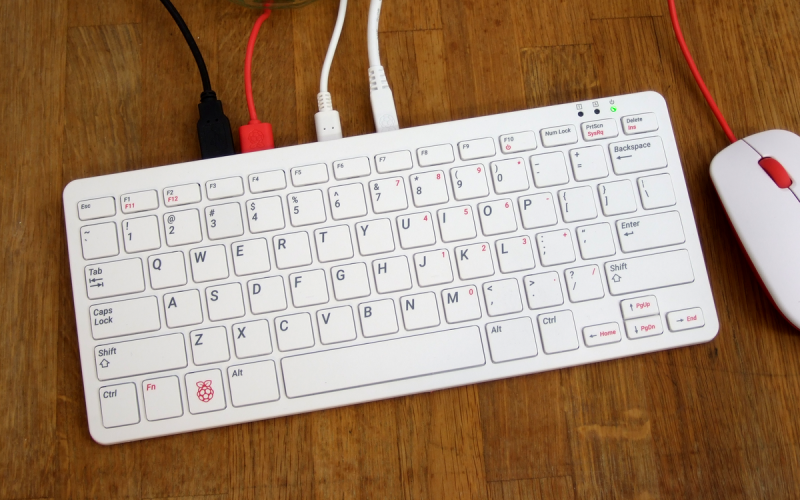The Raspberry Pi 400 all-in-one computer is a neat little unit that is powerful enough to take on most humdrum computing tasks while doing an excellent job of freeing up valuable desktop space. But what about those moments when both the Pi and a PC are needed on the same desktop? How can the Pi and the bulky PC keyboard share the same space?
[Gadgetoid] may have the answer, with a clever bit of software that presents the Pi’s mouse and keyboard as peripherals on its USB-C power port. If your PC has a high-power USB socket that can run the Pi then it can use the small computer’s input devices just as well as the Pi itself can. It’s fair to say that the Pi 400’s keyboard is not it’s strongest point, but we can see some utility in the idea.
Running it is simply a case of running an executable from the Pi. Control can be wrested back to Raspberry Pi OS with a simple keystroke. Perhaps it’s not the ultimate desktop experience, but if you’re a die-hard Pi-head there’s plenty of appeal.
Within a few weeks, it’s a year since the launch of the Pi 400. We’ve not seen as many of them as the other Pi models, but you might find our original review to be of interest.
Thanks [Itay] for the tip.
















It’s a cool product except for one glaring blunder: the micro-HDMI ports. WTF.
You really think it was a careless mistake? Or do you think maybe it was a carefully considered compromise/decision that you disagree with? Seems a bit dramatic, considering the adapter is 3$ and can be used for tablets, phones, or any other device with that port. Clearly you feel very strongly about it since you brought it up again below as Oscar Goldman.
I agree with the hate on fragile micro hdmi ports. I also think they had to make a choice to do that, or have only one hdmi port in the footprint.
I can also think of lots of ways to improve the pi, like two extra usb-c ports with display output instead of micro hdmi, or making the main usb support usb-pd, so it can ask for 12v, which solves the 5v voltage drop issue.
All this would be nice, but drives the price up while they’re trying to make everyone happy.
This kind of invalidates the concept of needing a physical device to tap someone’s keyboard and mouse movements. Forget a hardware keystroke logger, just get root on the attached raspberry pi and install whatever you want.
Interesting project, I was not aware that Pi-400 power port can act as USB device.
What about the other way around using Synergy?
https://symless.com/synergy
The Synergy solution seems to me to be more standard and more complete (addition of other PCs)
Synergy is a poor choice anymore. Commercialized and and a bit bloated, and soon to run on Electron, which will explode the bloat exponentially.
The original Synergy was forked and became Barrier, which retains the simplicity and goals of the original Synergy. It’s in the repository for most distributions and of-course runs on windows and mac.
https://github.com/debauchee/barrier
+1
I use Barrier daily and it’s extremely good software. It’s way better than I could ever get Synergy to run.
Why can’t this be done on a standard RP4 or 3 ?
Because they don’t have a built-in keyboard.
or just use vnc from a desktop?
Finally, something I can do with my pi400! It’s done nowt but gather dust since I bought it :’/
I’m still struggling to find a killer app for my Pi 400. It’s cool to toss up some info or video on a TV, way better than an ordinary Pi, but that’s about it so far. I sort of wish it also had a touchpad or trackpad instead of needing an external mouse. It might end up living on my CNC, though a cheap laptop is even more ideal for that use case.
“It’s cool to toss up some info or video on a TV”
Except for the stupid micro-HDMI ports…